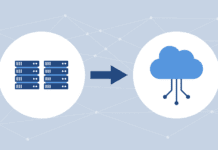EMC became the latest storage vendor to venture into the continuous data protection (CDP) market today when it introduced its RecoverPoint software at Storage Networking World in Orlando, Fla.
The concept of CDP is simple. Corporations have traditionally backed up data once a day, leaving data created after the back-up period vulnerable to corruption, attack or disaster until the next backup.
CDP involves implementing back-up and recovery tasks frequently throughout the day to ensure that data can be recovered at any point in time. If a disk fails, CDP software restores data up until the moment of the corruption or outage.
Mark Sorenson, senior vice president of EMC Software, said that is the root of RecoverPoint.
Most competing CDP products only offer frequent snapshots per day, which is all most businesses need, Sorenson said. RecoverPoint recovers to any point in time, particularly at policy-driven checkpoints such as database checkpoints, quarterly closes or other events. EMC has come to call this recovery method “significant point in time,” or SPIT [Editor’s note: We’re not making this up].
“It’s the penultimate instantiation of backup to disk, allowing you to get the fast times of recovery from disk while also getting the fine-grained capability of choosing you recovery point at the instance before the corruption occurred,” Sorenson said.
How does it work?
RecoverPoint, available next quarter, captures all writes to production environments as they occur and writes them in parallel to an allocated recovery storage space. Because data is captured whenever a change is made, a possible recovery point is available for every instant in time.
While Sorenson said RecoverPoint is home cooked and supports storage arrays from different vendors, he did say EMC is licensing the policy-based management software from Mendocino Software, whose Recovery One product EMC resells. He said Mendocino software drives the RecoverPoint Engine.
Mendocino is making the rounds. HP recently agreed to resell Recovery One under its own branded CDP offering.
CDP is a burgeoning niche in the storage space that has gained a lot of validation from the involvement of major vendors such as IBM, Symantec, HP and now EMC. Backup software is one of those things that enterprises take for granted, but desperately need to help save data and meet compliance regulations.
“Some folks don’t think back-up and recovery is very sexy, but we know for a fact that it’s still top of mind for our customers,” Sorenson said.
Sorenson said his employer has also added the EMC Backup Advisor tool to its arsenal to help corral information from all backup mechanisms — backup software, tape drives and backup server operating systems — in a data center. Available now, the tool presents the information in a way that helps customers find and fix problems in the backup process.
Last but not least, EMC has upgraded the backup software it acquired from Legato. Legato NetWorker 7.3 boasts better security, retention policies and target sharing, as well as a new graphical user interface (GUI) for easier management.
Article courtesy of InternetNews.com





